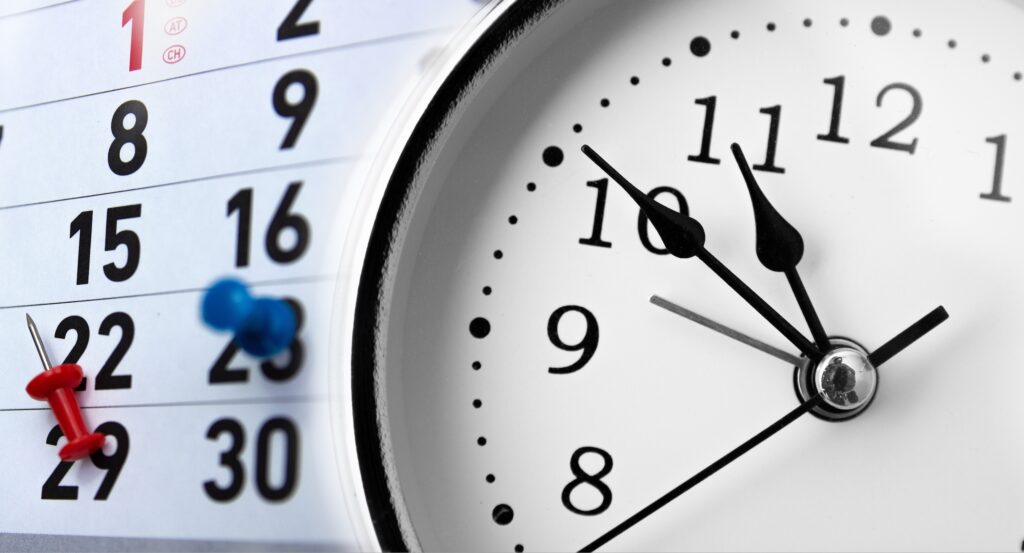When your company issues a press release, you want to maximize the impact it will have on your audience.
If you aim to reach journalists and editors of news outlets, you want your press packet to hit their inboxes at an optimal time.
If you want to publish and distribute a press release on your terms without having to submit it to a journalist or editor, you may wonder if there’s an ideal date or time to issue a release or if strategic scheduling matters at all.
Some commonly cited statistics indicate particular days of the week or times of day as favorable for a press release, but this depends on your unique goals.
Submitting Your Press Release To Journalists
If you’ve prepared a press packet with a press release, media announcement, and fact sheet, your next step is to get it in front of a journalist or media editor. Depending on the size of the outlet or publisher, your packet is likely to be competing with other companies and individuals who are also seeking coverage.
Because you’re going to be vying for attention in busy inboxes, you’ll want to reach out when the recipient is most likely to see your message.
The middle of the week, not too early or too late into business hours, and with enough time for your packet to be read and broadcasted before your news is outdated is standard advice. Tuesday, Wednesday, or Thursday are the conventionally recommended days for sending releases.
Exceptions are made for any days that are following or preceding holidays or long weekends. In general, you want to strike when inboxes are most likely to have a lull in incoming communication, so avoid just before and after weekends, first thing in the morning, and at the end of the day.
Depending on your topic and location, there will be other factors that impact when you should reach out to journalists. For example, if you’re trying to submit a local story and your town is having its annual festival or something has happened in your community that’s made state or national news, you may want to wait until the local news cycle is less focused on a single trend.
In addition to good timing, the press release email’s subject line will determine whether your pitch stands out or whether it’s indistinguishable from pitches that are ignored or readily marked as spam.
The difficulty of cutting through the noise is a major reason why many people decide to move forward with their own distribution methods.
Depending on your organization, the news you’re sharing, and your goals for reaching an audience, bypassing the traditional approach can be far more effective. This means you’re not pitching to journalists and submitting press packets; instead, you decide when, where, and how to publish a press release on your own.
Scheduling Your Own Press Release Distribution
If you’re going to publish your press release through a distribution service, when it reaches readers is a little more within your control. Press release distribution enables you to broadcast your message to multiple news outlets and media sites that are within that distributor’s network.
Apart from its appearance on news sites and outlets, your press release will also appear on Google News and other news curation services based on how users search. Direct exposure to internet users can be very impactful depending on what your press release is announcing and how your most desired audience searches for news.
But just as with the traditional approach to reaching journalists, the optimal time to publish a press release comes into question. When you’re publishing a press release yourself, does the time and day matter?
The Best Time To Publish A Press Release for Distribution
There are a lot of variables that determine the best time to publish a press release. The type of announcement, the pace of news in your industry, and trends within your niche will affect the ideal time to get the greatest exposure.
If you’re publishing a press release to market a new product or some other aspect of your business, when you publish is less important than how long your press release appears in search results. The longer your press release is live, the more likely it is to appear when an internet user searches for information on the solutions your company is broadcasting.
Press releases that announce an upcoming event should be published two or three weeks prior to the event date or the earliest date your audience can take action, such as buying tickets or signing up. This will give potential attendees or participants enough notice to plan their attendance without the date being too far into the future. Too far advanced notice means your press release is unlikely to prompt much active or current interest.
Press releases that are meant to respond to current issues or trends should be published as soon as possible. In addition to being more likely to appear when an internet user searches for the topical trend or issue, your press release will be more likely to appear as a suggested result based on their recent search behaviors. Therefore, publishing a release within days or hours of peak interest or a trending topic is ideal for capturing attention.












